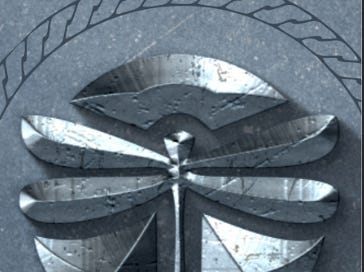Rule #2: The Duel Between Growth and Decay
The duel between growth and decay ceases to be a two-sided battle. The third way emerges—the way of the dragonfly.
In the intricate symphony of existence, a profound paradox takes center stage - the ceaseless battle between growth and decay. It's a timeless conflict that transcends the boundaries of life, business, and our very essence. This law applies universally, whether we're talking about biological species, human beings, companies, or even empires.
Within the realm of growth, a fundamental truth emerges: the pursuit of growth demands a constant infusion of energy and resources. This growth process, where metabolic energy fuels the expansion of life, necessitates a strategic allocation of resources for both nurturing new growth and tending to maintenance and repair.
In the early stages, an overwhelming share of resources is fervently directed towards fostering growth. However, as maturity sets in, a transformation unfolds, shifting the focus. Now, the allocation of all available resources tilts heavily towards repair and maintenance. It's a natural rhythm seen in the natural world and mirrored in the life cycle of organizations.
Growth → Maintenance → Repair
Let's illustrate this concept using the journey of a company. In its infancy, it's all about growth, where every drop of capital (socioeconomic energy) is funneled into expanding and conquering uncharted territories. The company is akin to a wild stallion, charging toward new horizons. But as it matures, the narrative changes, often to its detriment. Instead of relentless growth, resources are diverted toward preserving its hard-earned status, with the aspiration to maintain its cherished reputation as a ROCKSTAR.
However, this phase, what we term the ICARUS state of a company, is where the seeds of potential stagnation are sown. It's when the energy once devoted to innovation and expansion is redirected toward guarding the fort. Prices surge, profits plateau, and real growth teeters on the brink of coming to a standstill.
The company, previously open and flexible in its management style, now tightens its grip. Control becomes paramount, and the priority shifts from growth and exploration to maintenance. We now enter what could be aptly labeled the ZOMBIE state. It's characterized by hierarchical structures, damage control, and an absolute command-and-control system focused solely on survival.
But here's where the plot thickens: a fourth state emerges, offering an alternative route that defies the traditional growth-to-decay trajectory. Instead of channeling all our energy into maintenance and repair, we confront obsolescence head-on. We embrace the Icarus state as an opportunity for reinvention. We willingly relinquish control, allowing just enough freedom for new ideas to take flight. We call this transformative state the DRAGONFLY.
In the dragonfly state, we eagerly anticipate the end of the old system, not with fear but with acceptation, knowing that it's only by shedding outdated beliefs that we can embrace a new business model. Growth makes a triumphant return, but the death of the outdated system creates discomfort for employees and investors alike. They must wholeheartedly accept the volatility of reinvention, but in doing so, they pave the way for substantial returns and a new era of prosperity.
The duel between growth and decay ceases to be a two-sided battle. The third way emerges—the way of the dragonfly. It transcends the conventional cycles, beckoning us to embrace change, to accept the end as a new beginning, and to soar beyond the limitations of traditional thinking. The dragonfly embodies transformation, reminding us that in the ever-evolving symphony of life and business, the only constant is change itself.
The dragonfly epitomizes the individual who avoids maintaining a set of beliefs that are no longer effective, instead allocating energy to create a new version of themselves. It symbolizes the company that resigns control and embraces exploration and reinvention over the maintenance of the status quo. It represents the country that relinquishes autocratic systems in favor of fostering heterogeneity and knowledge spillovers, thus birthing a new technological revolution. It's the embodiment of transformation, the embodiment of the dragonfly.
Thanks for reading,
Guillermo Valencia A
November 5th, 2023







